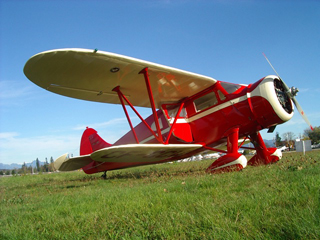
Waco AQC-6
The Waco Aircraft Company of Troy, Ohio was a major manufacturer of aircraft in the U. S. from 1928 - 1935. Beginning in 1921 as the Weaver Aircraft Company they moved to Troy in 1924 and became the Advance Aircraft Company keeping the Waco logo. From 1929 they changed the name to the Waco Aircraft Company. The Waco (wah-co) series of four-seat cabin biplanes were initiated in 1931 and were produced continuously in progressively refined models until 1939.
The Waco system of model designation takes some time to understand - the first letter identifies the engine type, the second the wing style, and the third the fuselage design. The Museum’s aircraft was manufactured in 1937 at Troy, Ohio as a ZQC-6 model (285 hp Jacobs L-5MB engine) but was converted to an AQC-6 (330 hp Jacobs L-6MB) in 1947.
Purchased new by the Department of National Defence, Ottawa, it was operated by the Department of Transport until 1949, when it was moved out to the British Columbia coast. It was then operated by B.C. Airlines, followed by a logging company. Dr. Jack Pickup of Alert Bay was the next owner, who acquired the airplane in 1953 and routinely used it as a "flying doctor" float plane. During its long career it suffered several landing accidents.
The Waco was donated to the Canadian Museum of Flight in 1980 by Dr. Pickup. Although the aircraft was donated on floats, it is now operated on wheels. The first test flight in over 30 years was carried out on February 13th, 2002 after a twenty-year restoration by volunteers at the Canadian Museum of Flight. This aircraft is one of the Museums flight worthy fleet.
For more information on the history of this aircraft, please see Dr. Jack Pickup, British Columbia's Flying Doctor in our history section.
Original drawings are required to perform a certified rebuild. The Smithsonian Institute graciously provided the Canadian Museum of Flight with all the necessary drawings to complete this project.
Technical Details:
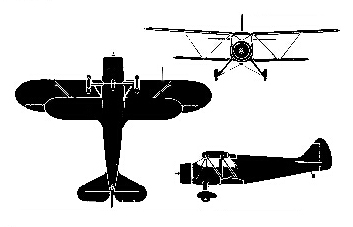
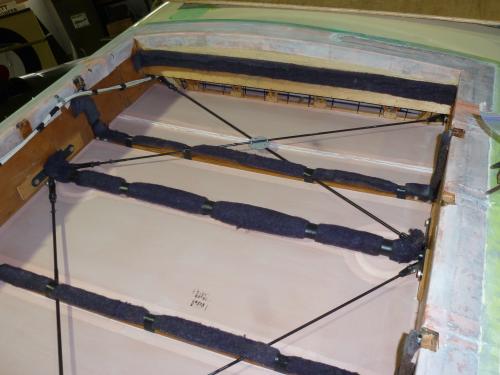
Note the wooden wing spar on the left of the photo.
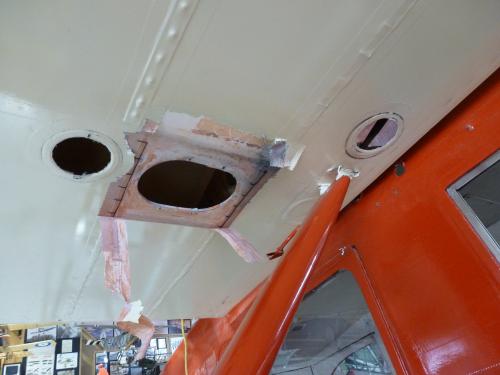
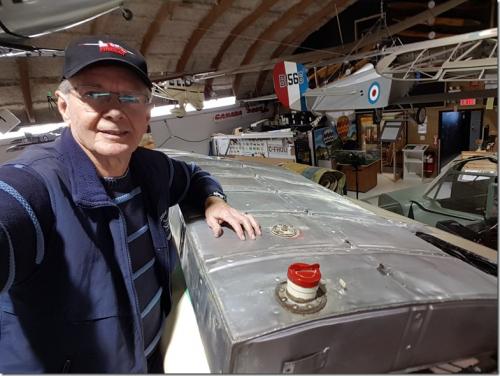
so that pinhole leaks can be repaired.
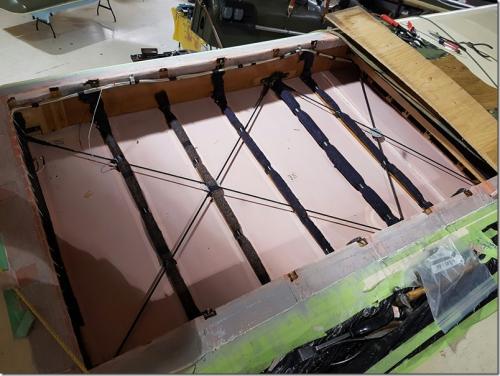
fabric covering replaced. Maintaining vintage aircraft in airworthy condition is never easy!
*************
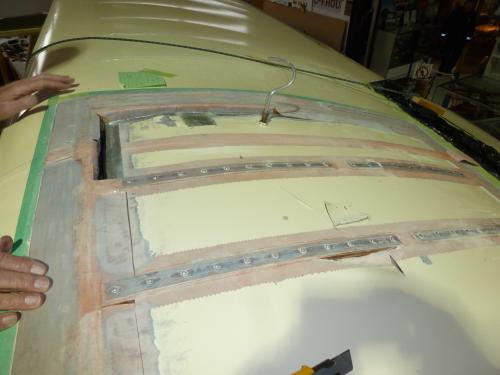
It is a slow process that will allow the fuel tank to be removed and examined.